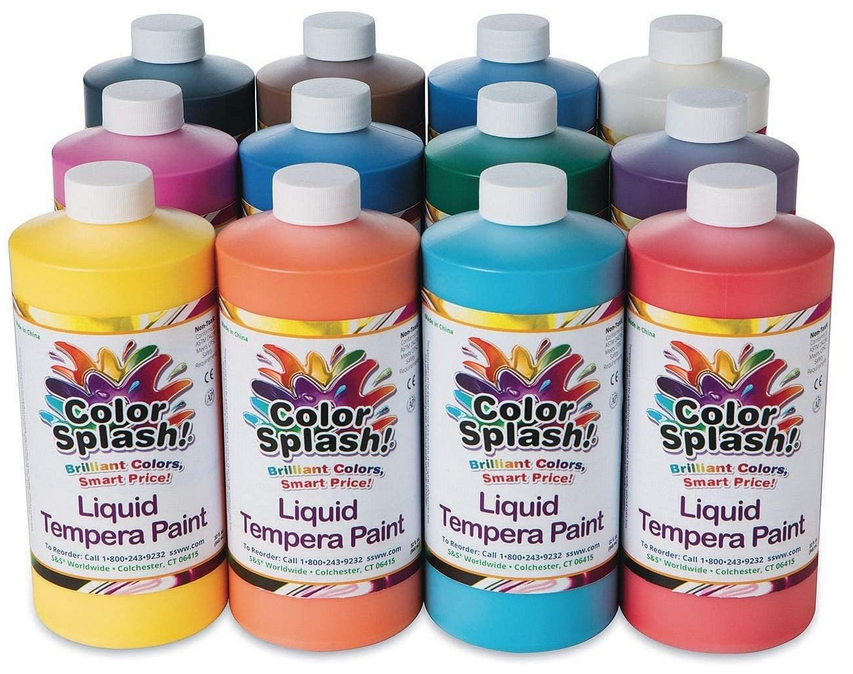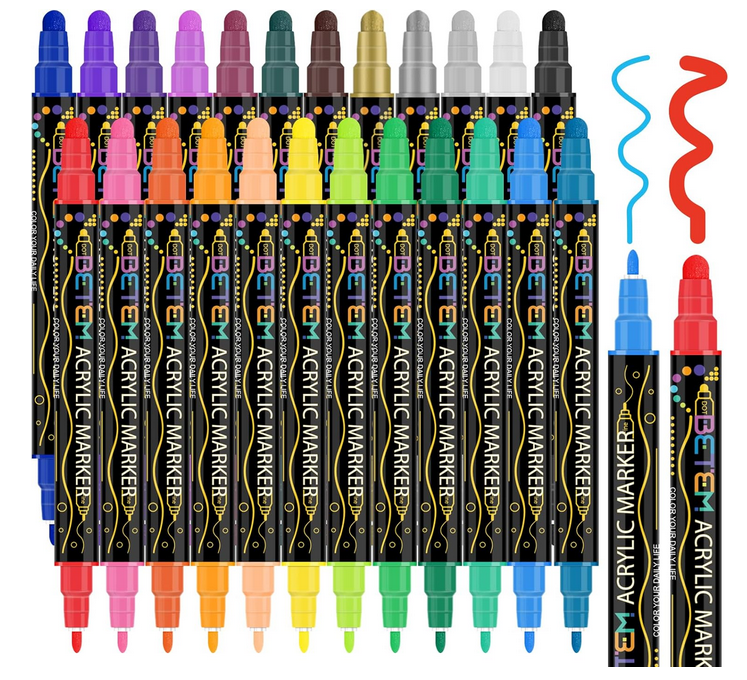- Home
- Art History
- Baroque
Baroque
... the ornate age
As Baroque art emerged in the late sixteenth century, the Catholic Church decreed that art should inspire viewers with passionate religious themes. Between 1545 and 1563 it was decided at the Council of Trent that religious art must encourage piety, realism, and accuracy. The Church's hope was to glorify and strengthen the image of Catholicism. The Catholic popes financed magnificent cathedrals and grand works to display their faith's triumph.
Monarchs also spent grand sums on architecture projects and the decorative paintings (wall frescoes and ceiling paintings, for example) and sculptures found within.
Baroque art combines emotion, dynamism, and drama with powerful color, realism and strong tonal contrasts. Baroque painters were sensitive to light to the effect of achieving maximal emotional impact.
Although Baroque art embraced many different styles, during its greatest successes, this art school mainly depicted Biblical and mythological allegories on a grand scale, using strong tonal contrasts and lighting, sumptuous colors, and a sense of action and awe.
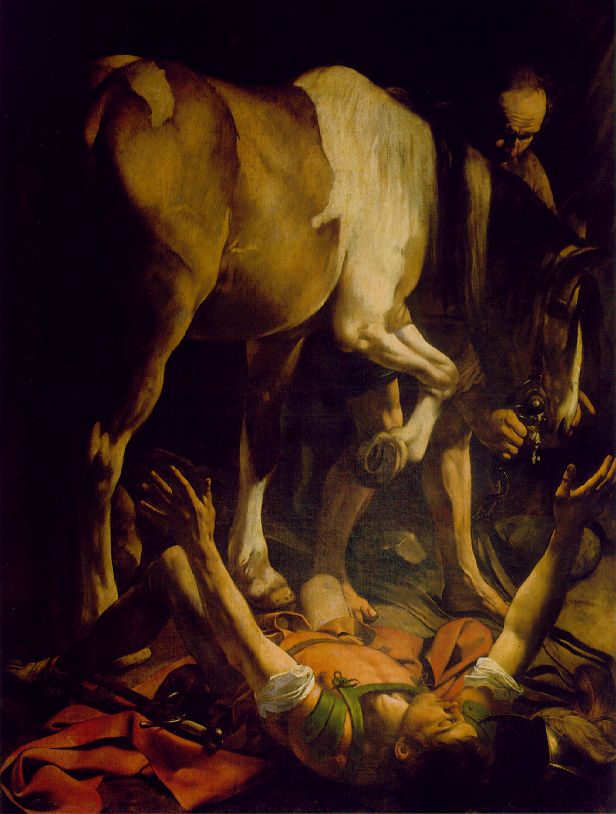
The Conversion of St. Paul -
By Caravaggio, c. 1601
Caravaggio made saints seem like ordinary people and miracles seem like everyday events.
He favored commoner folk as his models for painting; he rejected strict rules about what and how to paint. His radical approach to life, in spite of immense talent, led to an early death at the age of 37.
The Baroque style embraced and developed Renaissance models, both religious and secular, especially landscape. The Baroque style of art developed first in Rome, Italy, then spread to France, Germany, the Netherlands, Spain and Britain and continued until about 1720, lasting approximately 150 years. Baroque advances pushed the role of art into everyday life.
|
Key Artists: Caravaggio Annibale Carracci Artemisia Gentileschi Rembrandt Peter Paul Rubens Diego Velásquez |
Key Developments: New techniques of chiaroscuro (light and dark) were developed to enhance atmosphere and create spectacular effects of highlight and shadow. Brushwork became expressive and broad, with paint often applied quite thickly, all designed to create spectacle and illusion. This was an emotional, theatrical style that focused on realism and awe-inspiring grandeur. |
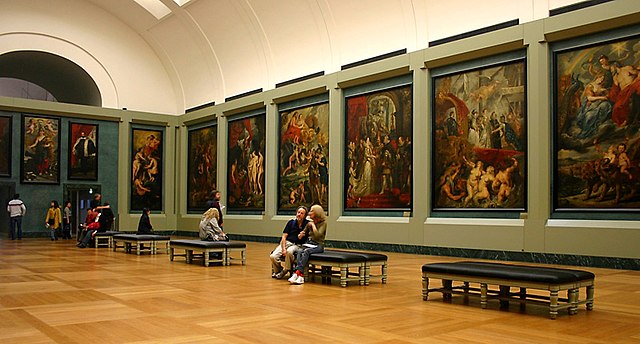
Peter Paul Rubens accepted the commission from Marie de Medici, Queen of France, to paint twenty-four canvases to illustrate Medici glory (c. 1625). These painting occupy one of the large rooms in the Louvre Museum in Paris, France.
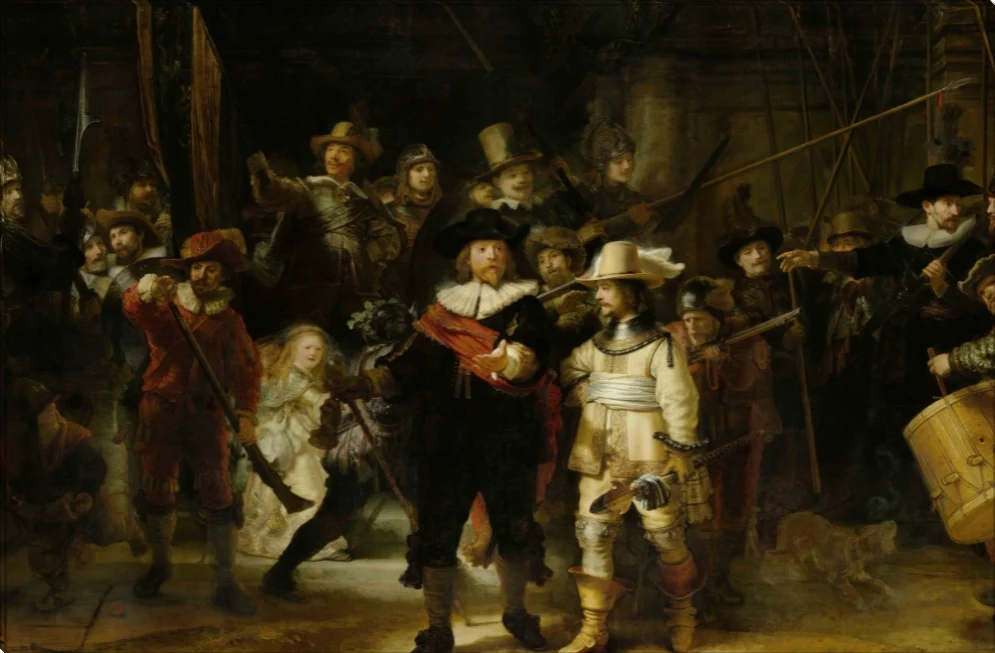
The Night Watch -
by Rembrandt, c. 1642
The Night Watch shows Rembrandt's technical skill with lighting, composition and color. The scene shows a military captain giving his company marching orders, men in action. This painting shows several figures in their regalia, in movement; yet, the composition can be seen as a group portrait in dynamic Baroque style. Consequently, some of the subjects whose figures are in shadow or are somehow diminished or obscured were disappointed to not have an equal showing on the canvas.
Rembrandt (1606-69) was a prolific artist - an exceptional painter, draftsman, and etcher. His images are characterized by luxuriant brushwork, rich color, and dextrous chiaroscuro. During his lifetime, he was a very successful portrait painter, able to portray emotional depth.
|
After Rembrandt's wife died his style changed. He became more psychological and painted more religious subjects. Rembrandt is considered the most accomplished etcher ever. Rembrandt produced an unusually large number of self portraits. |
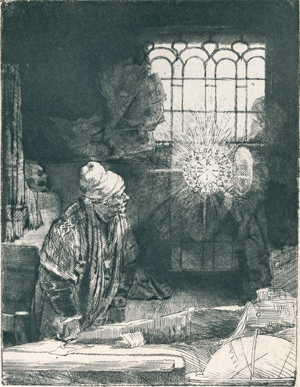 | |
|
|
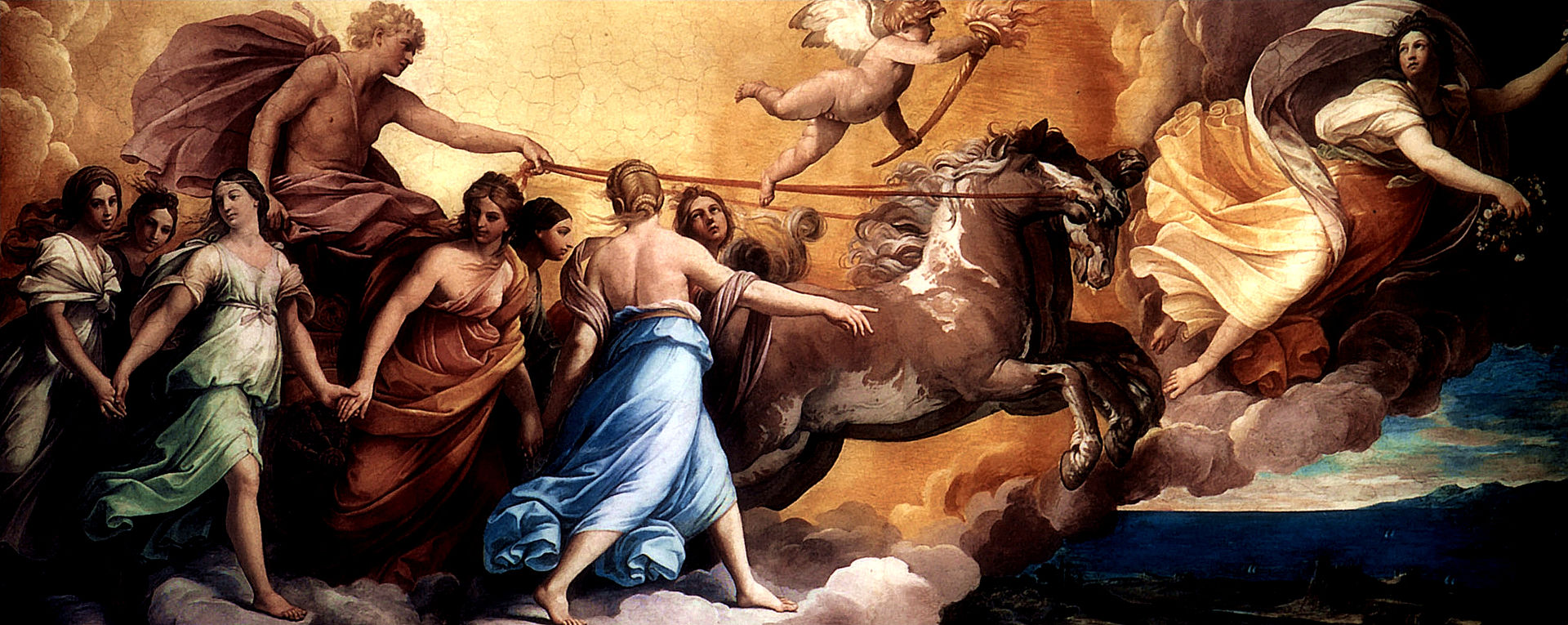
Aurora
by Guido Reni, c. 1613
Guido Reni was trained in the Bolognese academy for artists. Drawing inspiration from the painter Raphael, shows the dawn - Aurora - leading the chariot of Apollo. The Bolognese academy was the first of its kind in the history of Western art. It undertook to teach art based on traditions antiquities, and Renaissance art examples. The Bolgnese painters assumed their work was correct as they were learned.
The elements of dynamism, contrast, and drama place this ceiling painting (the Casino Rospigliosi, Rome) in the Baroque school.
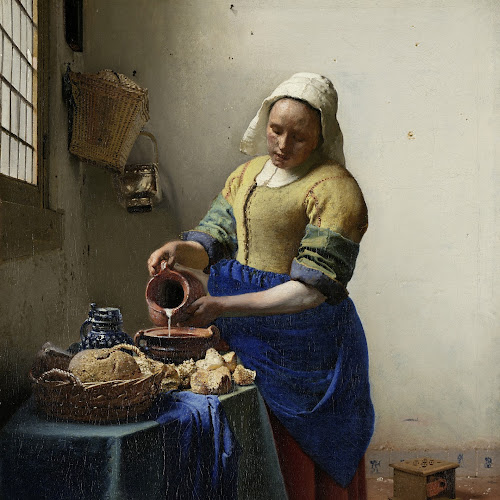
The Milkmaid -
by Johannes Vermeer, c. 1658
...
Vermeer used a camera obscura to aid his accuracy in drawing. Even though he had a precise tool for outlining, he used dabs of paint to build what one critic called "crushed pearls melted together" - defining beads of light, a mosaic of paint daubs.
Johannes Vermeer (1632-75) was part of the "Dutch Golden Age" when an extraordinary realistic painting style developed in the Holland region. This stylistic turn coincided with the Baroque period.
Perhaps no painter was more masterful in the use of light. Vermeer's colors were bright, pure and glowed unlike anyone before. His "Girl with a Pearl Earring" painting is said to have used lapis lazuli as a pigment for painting her the blue turban.
Vermeer is known as the Sphinx of Delft. Of his personal life little is known; although he seems to have prospered living in Delft, Holland until his death at 43, he left a widow and eleven children in insolvency. Only about 40 of his paintings are known to exist.
Baroque art succeeded in marrying the advanced techniques and grand scale of the Renaissance to emotion, intensity, and drama, thus making the Baroque era the most sumptuous and ornate in the history of art.
Okay, so now I've put on some ads from Amazon - from which I may earn a few cents. (2025)
